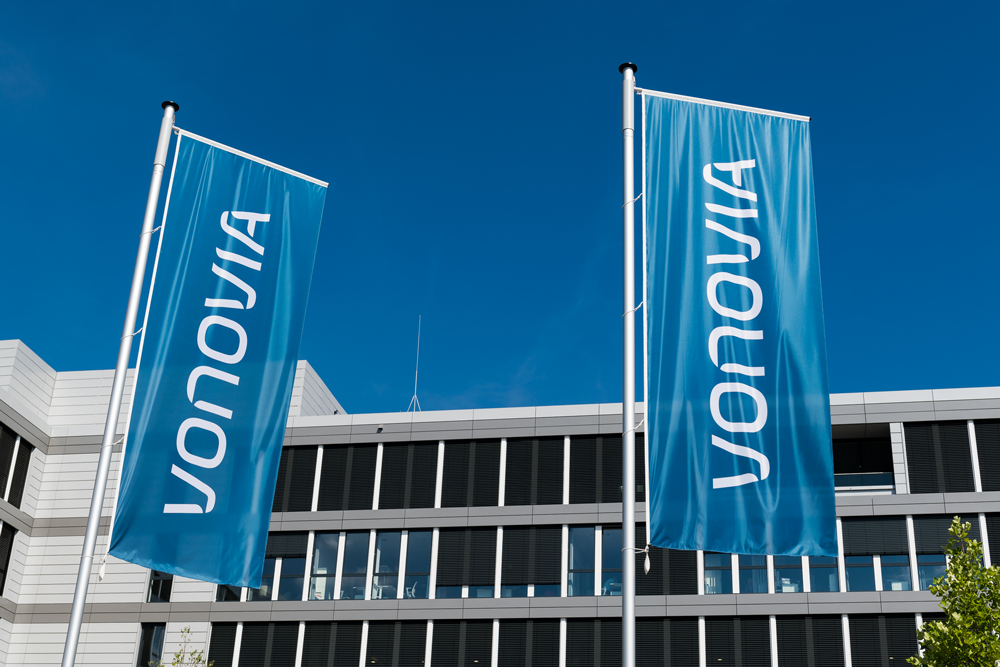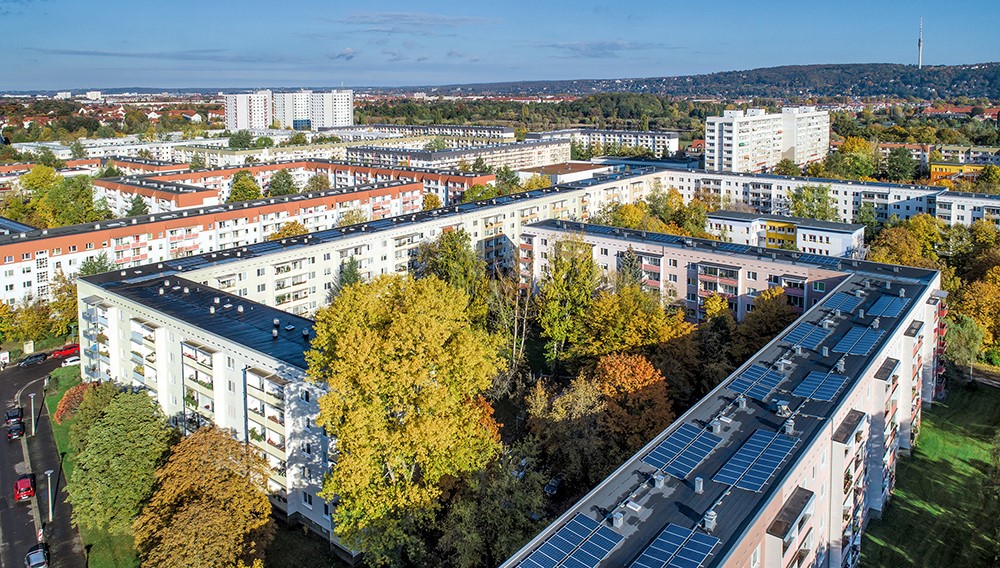Development of the Economy and the Industry
Germany
The German economy has bounced back despite the ongoing pandemic and supply bottlenecks. According to preliminary calculations by the Federal Statistical Office (Destatis), gross domestic product (GDP), expressed in price-adjusted terms, increased by 2.8% year-on-year in 2021. After a weak winter half-year due to the pandemic, the German government expects the German economic recovery to pick up speed. It estimates a GDP-increase of 3.6% in 2022.
Although almost all sectors of the economy were able to increase their output in 2021, the economy has not yet returned to the pre-crisis level. In the public services sector, the drop in economic output seen in the crisis-ridden year of 2020 was almost offset in 2021. The construction sector was able to hold its own during the pandemic and increase its economic output significantly as against 2019. The negative impact of the pandemic is reflected, in particular, in the segment comprising other service providers, although manufacturing, too, remains below the 2019 level. According to the Kiel Institute for the World Economy (IfW), GDP will return to the pre-crisis level in the second quarter of 2023.
The ongoing fourth wave of infections, coupled with material and supply bottlenecks, slowed the catch-up process down considerably in the closing quarter of 2021. Once again, services involving personal contact and industry were particularly hard hit. The ifo institute predicts that private consumption will only have grown by 0.4% in 2021. From the spring onwards, the infection figures are likely to decline again in line with the general seasonal trend, and private consumption will start expanding significantly again. After subdued development in 2021, investments will also make a substantial contribution in the current year. Government consumer spending was yet again one of the main factors propping up German economic growth in 2021 (+3.0%). In particular, the state increased its spending on medical measures, e.g., for free lateral flow tests and the procurement of coronavirus vaccines. The IfW expects a slight decrease in government consumption in 2022. Foreign trade recovered in 2021 after plummeting in the previous year. Germany’s exports of goods and services abroad were up by 9.4% on 2020. Imports increased by 8.6% at the same time. Looking ahead to 2022, the German government expects imports to grow at a faster rate than exports due to strong domestic demand, with balanced net exports.
The labor market started to mount a marked recovery in the summer. According to the German Federal Employment Agency (Bundesagentur für Arbeit), the unemployment rate fell by 0.2 percentage points year-on-year to 5.7% in 2021. The IfW expects to see an unemployment rate of 5.2% in 2022.
Driven by higher energy prices, the rate of inflation in 2021 climbed to the highest level seen since 1993 and came in at 3.1% year-on-year according to the Federal Statistical Office. In addition to temporary base effects due to lower prices in 2020, effects resulting from the crisis, such as supply bottlenecks and marked price increases in upstream levels of the economy, were increasingly reflected in the consumer price index. The average inflation rate in 2022 is likely to climb further to 3.6% due to these factors. The European Central Bank (ECB) remained on its expansionary monetary policy course until recently, with key interest rates remaining unchanged at 0% for the main refinancing rate.
Over and above the risks associated with the pandemic and the supply bottlenecks for primary products, the direction of fiscal policy in the forecast period remains a source of uncertainty. The coalition agreement of the new German government includes adjustments to the tax and contributions system regarding both public investment and social benefits that are more likely to strain the government budget than relieve it, thereby stimulating the economy in the short term.
The German residential property market has proven to be very robust during the crisis. According to Helaba, sustained low financing interest rates coupled with the lack of investment alternatives and presumably the appreciation of one’s own home due to more people working from home have boosted the demand for residential real estate. There is still excess demand in the residential property market. The empirica price index for condominiums (all years of construction) increased by 13.2% in the fourth quarter of 2021 compared to the same period of the previous year (new construction 12.0%). Apartment rents are once again showing less dynamic development than purchase prices. empirica reports that, across the country, quoted rents were 4.0% higher on average over all years of construction in the fourth quarter of 2021 (new construction 4.4%) than in the same quarter of the previous year. The experts at F+B also identified phases of stagnation or only marginal growth in new contract rents in the course of 2021. The index for net cold rents, excluding ancillary expenses, of the Federal Statistical Office rose by an average of 1.3% in 2021. All in all, the trends were varied. According to the real estate portal Immowelt, quoted rents for existing apartments increased in 69 out of the 80 major German cities analyzed in 2021, although rents are growing at a slower pace than in previous years. Rents in Berlin are on the rise again since the German Federal Constitutional Court declared the rent freeze to be null and void on March 25, 2021. The remaining eleven cities show stagnating or slightly declining quoted rents over the same period. Further price and rent increases are likely to be on the cards for 2022, also because topics such as energy-efficient refurbishment and sustainable construction will determine the future for the residential segment. Not least due to the further widening of the gap between purchase prices and rents, the empirica bubble index for Germany showed a moderate to high risk of a bubble for 338 out of 401 administrative districts and self-governing cities in the fourth quarter of 2021.
According to the German Association of Professional Homeowners (GdW), the situation on Germany’s housing markets in attractive conurbations and fast growing regions has developed into a tense market situation. For a long time, the population was growing due to immigration. This process of growth was stopped for the time being in the wake of the coronavirus pandemic. According to initial estimates by the Federal Statistical Office, 83.2 million people were living in Germany at the end of 2021, roughly the same number as at the end of 2020 and 2019. While the increase in the number of deaths was significantly higher than the number of births, the gap was closed by the return to an increase in net migration in 2021. In 2020, net immigration was still on a downward trajectory. In their latest population forecast, the experts from the German Federal Institute for Research on Building, Urban Affairs and Spatial Development (BBSR) expect the population to continue to grow, not reaching its peak until 2024. The new government envisions Germany as a modern country of immigration and wants to make entry easier for specialists from non-EU countries, for example. According to the head of the German Federal Employment Agency, Germany needs around 400,000 immigrants a year, many more than in the past, to counter the looming shortage of workers. Due to the conditions created by the coronavirus crisis in 2020, the population as a whole did not increase any further, particularly in large independent cities (2020: -0.1%). The somewhat abrupt suspension of immigration from abroad during the lockdown period suggests that this might be a temporary effect. Increasing suburbanization has, however, already been evident for several years now, with the trend relating to internal migration links between Germany’s major cities starting to reverse. Capacity in metropolitan areas to accommodate more people moving into the area is scarce. Demand is shifting towards the areas surrounding cities, also thanks to the improved options for working from home or because of a renewed focus on towards the ideal house with a garden on the outskirts of the city or in the surrounding green belt. As fewer people moved to the country’s major cities, the drop in vacancies was another trend that came to a standstill, according to CBRE. Nevertheless, there is still a shortage of housing in Germany’s major cities, although construction activity is on the rise. The GdW expects to see around 315,000 completions in 2021, compared to 306,000 in 2020. In view of the expected net migration and the shortage of housing that has built up, however, the GdW believes that around 320,000 apartments will need to be constructed every year. The coalition agreement reached between the parties forming the new German government has set a target of constructing 400,000 new homes every year. In spite of the pandemic, price increases and supply bottlenecks, the German Institute for Economic Research believes that the outlook for the construction industry remains positive.
According to CBRE calculations, the residential real estate investment market in Germany achieved a record result in 2021 with a transaction volume of around € 49.1 billion, up by almost 140% on the previous year. Even leaving Vonovia’s takeover of Deutsche Wohnen, the biggest transaction in recent years, out of the equation, the investment volume in 2021 outstripped the figure for 2020 by far. CBRE expects to see dynamic transaction activity in the German residential real estate investment market in 2022.
Political measures that had an impact on the housing industry in 2021 include, for example, the Building Land Mobilization Act (Baulandmobilisierungsgesetz) (e.g., provisions designed to facilitate housing construction, approval requirement for the conversion of rental apartments into condominiums), a law designed to make share deals less attractive and a reform of the rent indices legislation. Rent indices have become compulsory for cities with more than 50,000 inhabitants. Uniform requirements will now apply to the preparation of qualified rent indices from July 2022 onwards. The CO₂ pricing system that has been in force since January 1, 2021 is having an impact on housing costs; the price was increased effective from January 1, 2022. The housing allowance was increased at the same time. Other new developments in 2022 include, for example, the phasing out of KfW Efficiency House 55 subsidy and the surprise provisional suspension of the government funding program for efficient buildings just before the end of January 2022. The German government wants to revise the subsidies and statutory standards for new construction. Refurbishment subsidies were already resumed at the end of February. For the new land tax that will apply from 2025 onwards, property owners will already have to submit a corresponding tax return from July 1, 2022. The new government coalition’s plans for the coming years include for example measures to step up the construction of (social) housing, new non-profit housing associations, as well as additional regulatory measures, e.g., lowering the capping limit and extending the observation period for rent indices.



